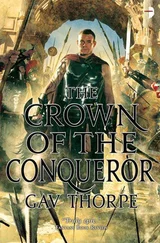Jan Kjærstad - The Conqueror
Здесь есть возможность читать онлайн «Jan Kjærstad - The Conqueror» весь текст электронной книги совершенно бесплатно (целиком полную версию без сокращений). В некоторых случаях можно слушать аудио, скачать через торрент в формате fb2 и присутствует краткое содержание. Год выпуска: 2007, Издательство: Arcadia Books, Жанр: Современная проза, на английском языке. Описание произведения, (предисловие) а так же отзывы посетителей доступны на портале библиотеки ЛибКат.
- Название:The Conqueror
- Автор:
- Издательство:Arcadia Books
- Жанр:
- Год:2007
- ISBN:нет данных
- Рейтинг книги:3 / 5. Голосов: 1
-
Избранное:Добавить в избранное
- Отзывы:
-
Ваша оценка:
- 60
- 1
- 2
- 3
- 4
- 5
The Conqueror: краткое содержание, описание и аннотация
Предлагаем к чтению аннотацию, описание, краткое содержание или предисловие (зависит от того, что написал сам автор книги «The Conqueror»). Если вы не нашли необходимую информацию о книге — напишите в комментариях, мы постараемся отыскать её.
The Conqueror — читать онлайн бесплатно полную книгу (весь текст) целиком
Ниже представлен текст книги, разбитый по страницам. Система сохранения места последней прочитанной страницы, позволяет с удобством читать онлайн бесплатно книгу «The Conqueror», без необходимости каждый раз заново искать на чём Вы остановились. Поставьте закладку, и сможете в любой момент перейти на страницу, на которой закончили чтение.
Интервал:
Закладка:
There was another factor — unknown to most people — which lent the programme on Wilhelmsen an added personal touch. In many ways this was Jonas’s tribute to Omar Hansen: a covert attempt to clear a man’s name — a salute to a grandfather who had, after all, been a seaman for half his life and ‘sailed Wilhelmsen’ to boot. The scenes had a personal feel to them because they were coloured by his grandfather’s countless stories about the Wilhelm Wilhelmsen shipping line, all those repeated boyhood references to ‘Speed and Service’ and ‘The Wilhelmsen Style’. And whenever his grandfather made Jonas a promise he always sealed it by saying: ‘You may rely upon Wilhelmsen.’
This programme was, therefore, in large part a declaration of love for the ship, for all the names beginning with ‘T’ which were read out like an incantation in the background, like symbols from a deep-sea poem — Talleyrand, Tudor, Triton, Taurus — because even though the Norwegians never designed a Model-T, they did have their T-ships, a whole succession of them, a genuine glossary in which each ‘T’ evoked its own universe, a snippet of geography or history, and it was these potent words which Jonas Wergeland wished to remind the viewers of. Here, it was the ships which played the lead in a programme which took a loving look at the lines and the profiles of those great vessels: ‘a real Boy’s Own programme,’ people said, and everyone who has ever strolled along a quayside, taking an unadulterated, lordly delight in inspecting the boats and dreaming of faraway places, knows what they were talking about. ‘Never has a ship been captured on film with such empathy and invention, such beauty and grace,’ as one critic wrote.
Jonas made use of everything from old film footage of the ships to postcards commissioned by the company, showing those Wilhelmsen vessels which had also carried passengers: prestigious cards which Jonas himself had been given as a child by a first mate, a relative from Hvaler, and had stuck up on the wall so he could look at them and dream that he was a ship-owner and this was his proud fleet. More than anything else, though, he used model ships, the kind that are normally kept in glass cases, yard-long copies in which every detail has been conscientiously recreated, a mouth-watering sight for anyone with a liking for ships, exquisite miniatures which left one wide-eyed and wondering, like Gulliver in the land of the Lilliputians. With the theme tune for Postbox , the shipping channel’s most popular programme, playing in the background, Jonas panned the camera lingeringly over these elegant ships, following their curves and caressing individual details, as if this were a programme about the erotic arts, not the art of engineering. And the viewers’ response, their bedazzled eyes, proved beyond a shadow of a doubt that Henrik Ibsen was right: Norwegians are under the spell of the sea. The ship has been Norway’s great achievement, from Viking times onwards. As the programme progressed, Jonas filled the screen with a map of the world on which the famous Wilhelmsen Lines were gradually traced across the seven seas, giving the impression of a colossal and almost incomprehensible conquest, a web, a veritable internet, a global embrace. And throughout it all, those names like points on a line — Talabot, Tabor, Tarifa, Trafalgar — as if the entire world consisted of nothing but ‘T’s. It was possibly a rather nostalgic programme, meant as a reminder of how shipping was one of the cornerstones upon which Norway’s affluent society had been built: of a quite inconceivable time when this nation had boasted the fourth largest merchant fleet in the world, but a fine reminder all the same: images that could not fail to touch the hearts of every Norwegian. These lines across the oceans were as beautiful a sight, as great a national treasure, as the Academic’s woodcarvings; the Wilhelmsen Lines were testament to the fact that a piece of artistic decoration could be carried out into the world.
Which was what made the contrast so striking. Because at the programme’s centre was a ship-owner who had lost half his fleet, seen one after another of his precious ships go down without being able to lift a finger. Jonas Wergeland was never in any doubt about which situation said most about Wilhelm Wilhelmsen, popularly referred to as the Captain. For Wilhelm Wilhelmsen was not the sort of ship-owner who loves only money, Wilhelm Wilhelmsen was a ship-owner who loved boats above all else, to whom the seafaring side — the ship, the men on board — meant as much as the commercial side. His older brother may well have been a more distinguished and far-sighted ship-owner, but in Jonas Wergeland’s eyes Wilhelm was the obvious choice, epitomizing as he did the Norwegian’s relationship with the sea: a ship-owner who, like most Norwegians, put safety first — there is even a story of how once, when a mouse had nibbled a hole in a chart, Wilhelm plotted a course round the hole, just to be on the safe side. And for those same reasons of safety he decided to put his faith in something sound, on lines, to take no chances, to bank on oil; Wilhelm was a ship-owner and a seaman, an owner with fifteen years service at sea, an owner who knew the bars of Saigon and Shanghai, a man who joined the company offices as a captain, with a roll in his walk and malaria in his blood. Wilhelm Wilhelmsen’s most treasured possession was not the stable of horses he would later own nor the palatial mansion with a Chinese pagoda in the pool in the grounds but a battered, camphor-wood ship’s chest from his years at sea as a young man.
For such a ship-owner, the war was not merely a source of patriotic indignation, but to as great, or a greater, extent, a source of real pain. There was nothing Wilhelmsen did not know about his ships, nothing; he had been involved in discussions about new vessels with the shipbuilders, he inspected the ships himself as soon as they docked at Oslo’s Filipstad Wharf, he knew every captain, every chief engineer on board the boats that were now being bombed, torpedoed, sunk on the high seas. Which is why Jonas Wergeland depicted Wilhelm Wilhelmsen on the bridge of a sinking ship, and replayed this shot again and again, to denote the twenty-six times during the war when Wilhelmsen was lost at sea in his thoughts. The filming of this scene had been a tough enough job in itself, involving a gruelling shoot down at a place called Verdens Ende, Norway’s very own World’s End on the tip of the Tjøme peninsula, not far from Wilhelmsen’s hometown of Tønsberg. Despite the NRK management’s worries about the expense, Jonas had organized the building of a set representing the last visible part of a sinking ship, the bridge upon which Wilhelmsen stood — although of course ships seldom sunk in such a way that the bridge was the last thing to be seen, but it was meant to be symbolic, and not one viewer complained. Actor Normann Vaage said later that he almost drowned during the shoot, because Jonas was never satisfied and Vaage had to put up with being sunk into the waves again and again. ‘Stop moaning, Vaage,’ Wergeland had shouted at him. ‘We’re at World’s End, remember!’
There is nothing so terrible, so ghastly, so disillusioning, so tragic, as a sinking ship. During the war the Wilhelm Wilhelmsen shipping line lost twenty-six ships, a whole string of ‘T’s which disappeared into the deep, and it was not only boats that were wiped out, it was words: Tenerife, Tortugas, Tancred, Touraine — and, not least, Thermopylae — they were legends that went to the bottom, whole epics: an Argos with all of its tales. And the main point of the programme was that Wilhelm Wilhelmsen took the tragedy of all this as personally as if he himself had been on board and gone down with each ship. Which is why Wilhelm Wilhelmsen was shown in that recurring shot, standing stiffly to attention in his captain’s uniform while the water slowly engulfed him; sequences with a primitive, almost brutal rhythm to them, accompanied by the discordant strains of an organ; sailors who had survived had described how the most infernal noise was heard as the air was squeezed out of the different sized valves when the boat went under — several times Jonas was put in mind of his first composition, the piano piece ‘Dragon Sacrifice’. By dint of such devices he created an effect that had viewers hanging on for dear life to their Stressless chairs, to save being sucked down into the deep themselves. Jonas Wergeland was in his element on this shoot, chasing the suggestion that only pictures can create, ships sinking again and again, and at the same time drawing on all his images of the war, that sore point in Norwegian history — an era in which the people of Norway took such an insatiable interest. Jonas Wergeland did not wish to manipulate but merely to underpin the viewers’ imaginations, and in so doing he helped them to see more than pictures on a screen; instead it was as if they sat in darkened rooms dreaming the whole thing up for themselves. ‘To be honest, I’ve never really done anything but Radio Theatre,’ Jonas Wergeland remarked on more than one occasion.
Читать дальшеИнтервал:
Закладка:
Похожие книги на «The Conqueror»
Представляем Вашему вниманию похожие книги на «The Conqueror» списком для выбора. Мы отобрали схожую по названию и смыслу литературу в надежде предоставить читателям больше вариантов отыскать новые, интересные, ещё непрочитанные произведения.
Обсуждение, отзывы о книге «The Conqueror» и просто собственные мнения читателей. Оставьте ваши комментарии, напишите, что Вы думаете о произведении, его смысле или главных героях. Укажите что конкретно понравилось, а что нет, и почему Вы так считаете.











